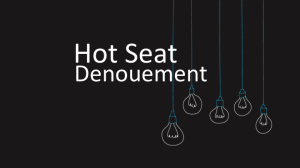Hot Seat #156: Denouement
Posted on: September 10, 2020, by : Mary Beth Howard
The case: 6 yo presenting with a cough, with concern for possible bioterrorism exposure.
Here’s how you answered the questions:
Denouement: The patient subsequently developed shock, empiric antibiotics were started. Patient subsequently required intubated for respiratory failure. In PICU patient required bilateral chest tubes to drain pleural effusions. The ID attending contacted the emergency public health lab to send sample for possible anthrax exposure as well as the CDC for information on local cases. Patient treated with IV ciprofloxacin, meropenem, and linezolid. After 24 hours, the sample from the chest tube is positive for toxins consistent with inhalation anthrax. Patient and family recover without incident.
Discussion: This is a common complaint that quickly becomes anything but common case. The suspected bioterrorism presents multiple clinical and ethical dilemmas. Key features that are concerning for bioterrorism include: proximity to 9/11 anniversary, powder exposure in the mail of a family with government connections, and the widened mediastinum on chest x-ray.
“Keep the house safe” was Dr. Simpson’s guiding principle for the multiple challenges in this case. This means that providers should act in the interest of the ED and hospital and secure the safety of as many people as possible. In terms of who to contact first, most fellows would contact Poison control given the ease of calling them, knowing that there is an expert (as opposed to a fellow) on the other end with protocol driven knowledge. The attendings, on the other hand, would contact infectious disease. Dr. Simpson agreed that contacting an internal resource, such as infectious disease consult team, who could then pass along the possible bioterrorism concern to other departments (infection control, PR, security to name a few) to “keep the house safe.”
Similarly, when discussing with the mother and nanny, all agreed it would be very important to be thoughtful in information conveyed and messaging. Dr. Simpson noted that one of the greatest threats in a disaster is social hysteria. As such, explaining the circumstance someone who is not the legal guardian (the nanny) who may also have access to social media would not be the best choice in this situation.
Overall, this case represents the complex challenges caring for a pediatric patient in a bioterrorism event. With prodromes that mimic common childhood presentations, we must be astute in recognizing unusual features of the presentation and history. Additionally, being aware of the resources available to help manage these patients real time is essential.
The information in these cases has been changed to protect patient identity and confidentiality. The images are only provided for educational purposes and members agree not to download them, share them, or otherwise use them for any other purpose.
